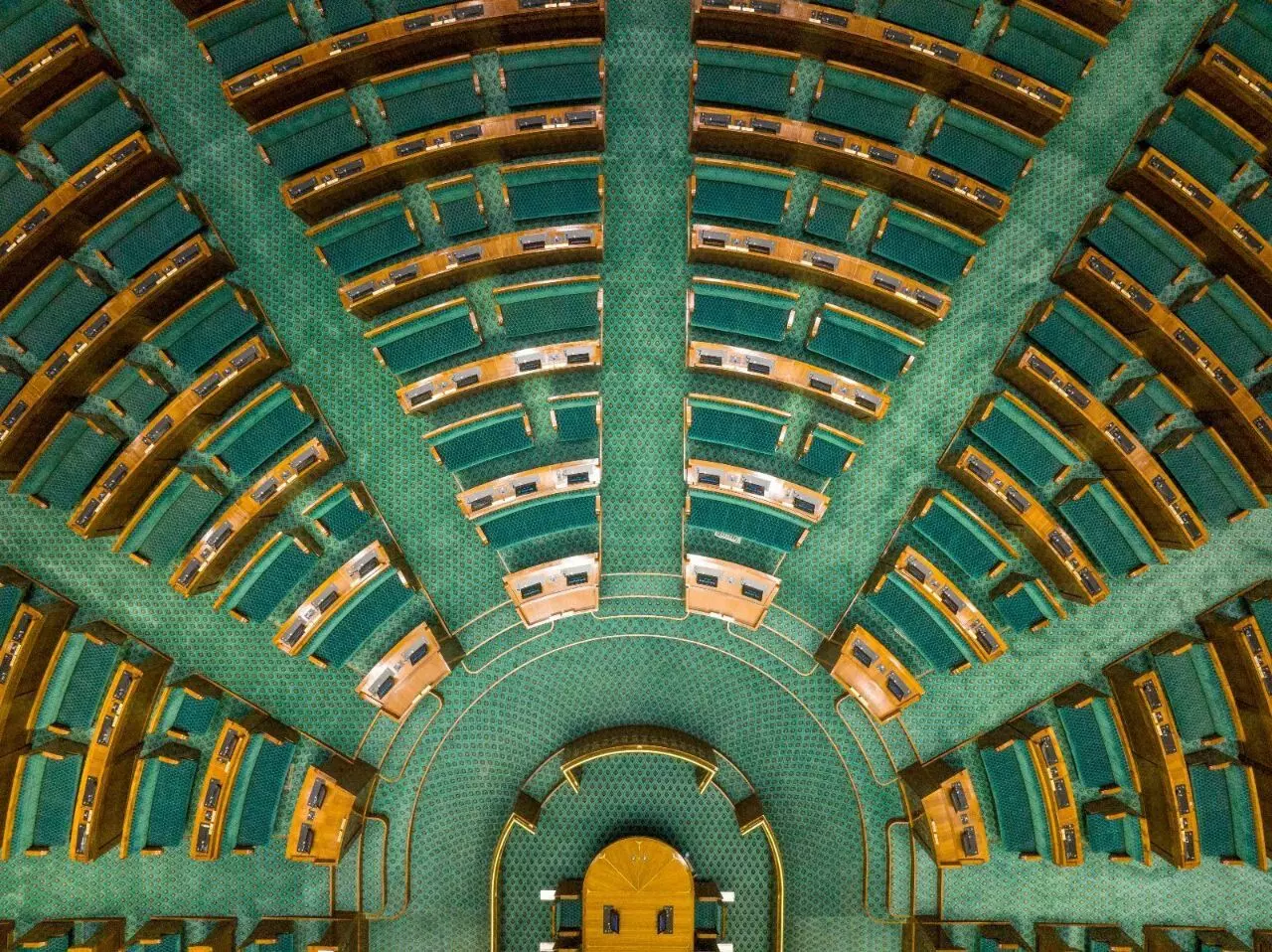Carpets from UP, bamboo floors from Tripura: What each state brings to new Parliament
With carpets from Mirzapur in Uttar Pradesh, bamboo flooring from Tripura, and stone carvings from Rajasthan, the new Parliament building reflects India’s diverse culture
By Newsmeter Network
New Delhi: Stage is set for the inauguration of the new Parliament building by Prime Minister Narendra Modi on Sunday amid a boycott by several Opposition parties that insist that President Droupadi Murmu as head of the state should do the honours.
Narendra Modi said the new Parliament building will make every Indian proud and shared a video of the new complex.
The new Parliament building will make every Indian proud. This video offers a glimpse of this iconic building. I have a special request- share this video with your own voice-over, which conveys your thoughts. I will re-Tweet some of them. Don’t forget to use #MyParliamentMyPride. pic.twitter.com/yEt4F38e8E
— Narendra Modi (@narendramodi) May 26, 2023
The new Parliament building, constructed by Tata Projects Ltd., will have a grand constitution hall to showcase India’s democratic heritage, a lounge for MPs, a library, multiple committee rooms, dining areas, and ample parking space.
With carpets from Mirzapur in Uttar Pradesh, bamboo flooring from Tripura, and stone carvings from Rajasthan, the new Parliament building reflects India’s diverse culture.
Material acquired from different states
The material used for the new building has been acquired from various parts of the country.
· The teakwood used in the building was sourced from Nagpur in Maharashtra, while the red and white sandstone was procured from Sarmathura in Rajasthan. The sandstone for the Red Fort and Humayun’s Tomb in the national capital is also known to have been sourced from Sarmathura.
· The Kesharia green stone has been procured from Udaipur, the red granite from Lakha near Ajmer and the white marble has been sourced from Ambaji in Rajasthan.
· The steel structure for the false ceilings in the Lok Sabha and the Rajya Sabha chambers has been sourced from the Union Territory of Daman and Diu.
· The furniture in the new building was crafted in Mumbai.
· The stone ‘jaali’ (lattice) dotting the building was sourced from Rajnagar in Rajasthan and Noida in Uttar Pradesh.
· The materials for the Ashoka Emblem were sourced from Aurangabad in Maharashtra and Jaipur in Rajasthan, while the Ashok Chakra donning the massive walls of the Lok Sabha and the Rajya Sabha chambers and the exteriors of the Parliament building were procured from Indore in Madhya Pradesh.
· The new Parliament building used manufactured sand or M-sand from Charkhi Dadri in Haryana for creating a concrete mix for the construction activities. M-sand is considered environmentally friendly as it is manufactured by crushing large hard stones or granite and not by dredging river beds.
· The fly ash bricks used in the construction were sourced from Haryana and Uttar Pradesh, while brass works and pre-cast trenches were from Ahmedabad in Gujarat.
“In a way, the entire country came together to construct the temple of democracy, thus reflecting the true spirit of Ek Bharat Shreshtha Bharat,” said an official.
Sengol installation in Lok Sabha
‘Sengol,’ a historical sceptre from Tamil Nadu which was received by the first Prime Minister Jawaharlal Nehru to represent the transfer of power from the British and was kept in a museum in Allahabad, will be installed in the new Parliament building. It will be placed near the chair of the Lok Sabha Speaker in the House chamber.
Rs 75 coin to commemorate event
To mark the event, the government will issue a commemorative Rs. 75 coin. According to a gazette notification by the department of economic affairs under the finance ministry, the weight of this coin could be 34.65-35.35 grams. One side of the coin will bear the image of the Lion Capital of Ashoka Pillar in the centre flanked by the word ‘Bharat’ in the Devnagri script and ‘INDIA’ in English. The rupee symbol (₹) and the denominational value ‘75’ in international numeral will also be inscribed below the Lion Capital. The other side of the coin shall bear the image of the Parliament complex and the year ‘2023’ in international numerals below the image.
Inputs from PTI